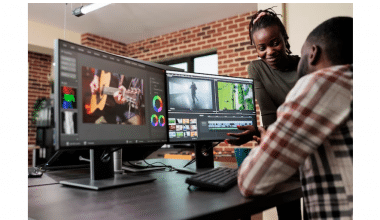Graphic design is a powerful form of visual communication that blends creativity with technology. In today’s visually oriented world, the ability to create your own graphic designs can be a valuable skill, whether you’re looking to enhance your personal projects, business endeavours, or express your artistic ideas.
By understanding design principles, choosing the right tools, practicing, seeking feedback, and continuously learning, you can develop your own unique style and create designs that leave a lasting impact. Design courses in London and other European countries give you access to state-of-the-art facilities and let you develop unique skill sets that place you on the front foot in the competitive job market.
If you’re a beginner eager to dive into the world of graphic design, this guide will provide you with essential steps to get started.
Learn the basics of graphic design
Before you begin creating your own graphic designs, it’s important to understand the foundational principles that guide the field. Master various design concepts that are crucial to creating visually appealing and effective designs. Familiarise yourself with color theory and typography to gain insight into how various elements work together to convey messages and emotions.
Identify your purpose and audience
Every design has a purpose, whether it’s to inform, entertain, sell a product, or evoke an emotion. Clearly define the purpose of your design and identify your target audience. Understanding who you’re designing for will help you tailor your design choices to resonate with your intended viewers.
Select your tools
Graphic design can be done using various software tools, each with its own set of features and learning curve. Some popular choices include Adobe Creative Suite (Photoshop, Illustrator, InDesign) and Canva. Choose a tool that suits your needs and start familiarising yourself with its interface and capabilities.
Experiment with different designs
Experimentation is key to finding your design style. Play with colours, typography, shapes, and layouts. Test different combinations and arrangements to see what works best for your project. Don’t be afraid to step outside your comfort zone and explore new ideas.
Start with simple projects
As a beginner, it’s advisable to start with simpler projects. Create social media graphics, posters, or simple logos to practice your skills. These projects will help you build confidence and refine your design techniques before tackling more complex assignments.
Seek feedback
Feedback is invaluable for growth. Share your designs with friends, family, or online design communities to receive constructive criticism. Learning from others’ perspectives can help you identify areas for improvement and refine your designs.
Stay updated
The field of graphic design is constantly evolving, with new trends, techniques, and technologies emerging regularly. Dedicate time to continued learning by taking courses, attending workshops, and staying up to date with design blogs and industry news.
Becoming proficient in graphic design takes time and dedication. Be patient with yourself and keep practising. Celebrate your progress, no matter how small, and remember that every design you create contributes to your growth as a designer. Enrol in a design course to learn more about graphic design.






